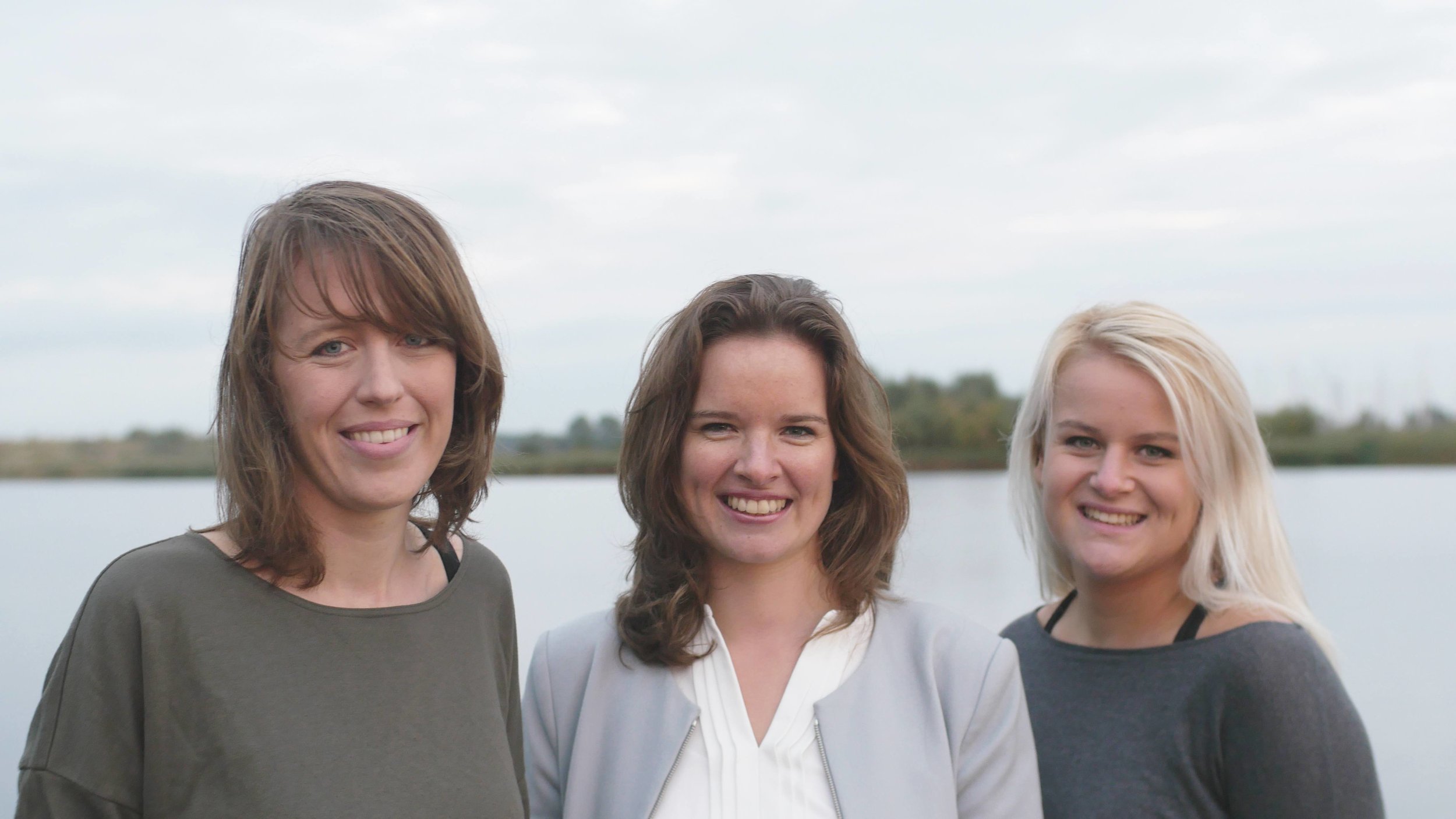Anne Marieke Eveleens, Saskia Studer and Francis Zoet
Anne Marieke Eveleens, Saskia Studer and Francis Zoet (who became friends teaching sailing classes at the same sailing school) were continuously confronted with plastic debris while on the water. They wanted to come up with a solution to stop plastic from entering the oceans without blocking the continuous ship traffic or fish migration. The solutions that already existed only caught floating debris while a huge part of waste travels lower. So they designed The Great Bubble Barrier (and they founded the organization in 2015), a system that creates a bubble screen by pumping air through a tube with holes located on the bottom of the waterway. It lets both fish and ships pass and brings waste to the surface of the water thanks to the upward flow of the bubbles. When placed diagonally, the natural current is used to guide the plastic on the riverside, which makes it accessible for collection and accessible removal. The Great Bubble Barrier addresses the problem of plastic pollution in our oceans by focusing on the source: our canals, rivers and channels.
In 2016, after a 3-month trial, The Great Bubble Barrier won the first prize at the Plastic Free Rivers Makathon of PWN (Dutch water supply company) and Rijkswaterstaat (Department of Waterways and Public Works in the Netherlands). The prize consisted of a pilot at the lab of Deltares, and an outdoor pilot in the IJssel at Kampen in The Netherlands. In collaboration with Rijkswaterstaat, Deltares and BAM / van den Herik, the concept has been extensively tested and proved successful. New insights came when testing the concept in the flumes at Deltares in May 2017. At the end of 2017, a Bubble Barrier of 200 meters at Kampen in the IJssel was realized. For three weeks, the European research team proved that the Bubble Barrier works under all conditions, with particular attention to the effect of wind and current on the Bubble Barrier.
The benefits of the Bubble Barrier, which can be used in both the largest rivers and smaller canals and channels, are plenty:
Makes smart use of the natural current of a river
Guides plastic to the side of rivers and canals.
Stops plastic on its way to the ocean
Is based on existing technology
Is an innovative concept
Increases the oxygen within the water
Does not need changes in infrastructure or policies
Is easy scalable
is cheap to implement
With these features, the system meets the most important conditions: it has little effect on shipping, fishing and the natural functioning of the delta. Another huge pro is the cost to implement the system. The implementation is relatively cheap, so developing countries especially will be able to do a lot with it. This means that rivers that currently transport enourmous amounts of plastic to the sea every day will be reached. Since The Great Bubble Barrier is based on existing technology, which is used in the oil industry and for separating fresh and salt water, it is also easy to apply. Because The Great Bubble Barrier is visually appealing, it attracts visitors, increasing awareness about the plastic problem.
The plastic problem is a big one: every minute, the equivalent of one full garbage truck of plastic trash is dumped in the sea. That is 1440 trucks per 24 hours and in total 8 billion kilos per year. With 80% of those plastics coming directly from land. That is why it is important to not only focus on cleanup, but to raise awareness and to inspire change. Change is built on research, education, campaigns and the attractiveness and accessibility of alternatives. The Great Bubble Barrier fights plastic pollution via 4 routes:
Cleaning the plastic debris in rivers with our Bubble Barrier
Increase awareness
Measure and monitor plastic debris in rivers
Search for a circular plastic chain
In September 2018 the three women won a cheque of EUR 500,000 at the Postcode Lottery Green Challenge to further develop their green innovation. But ambitions are high and more money is still needed so a crowdfunding campaign has been started. Several well-known organizations, including the Plastic Soup Foundation, support the campaign. Whoever wants to support The Great Bubble Barrier with a donation can do so here. Because after The Netherlands The Great Bubble Barrier plans to go global with a particular focus on Asia, where 8 out of the 10 most polluting rivers are situated.
Sources:


